Styrofoam is one of the most persistent and problematic materials in the global waste stream—lightweight, cheap, and nearly indestructible. Often used once and discarded, it rarely finds its way back into meaningful production cycles. Yet a growing number of designers are challenging that status quo. From monolithic minimalism to expressive pattern-making and sculptural reuse, these projects reveal how discarded packaging can be transformed into thoughtful, functional furniture, turning a throwaway material into an object of value, craft, and sustainable thinking.
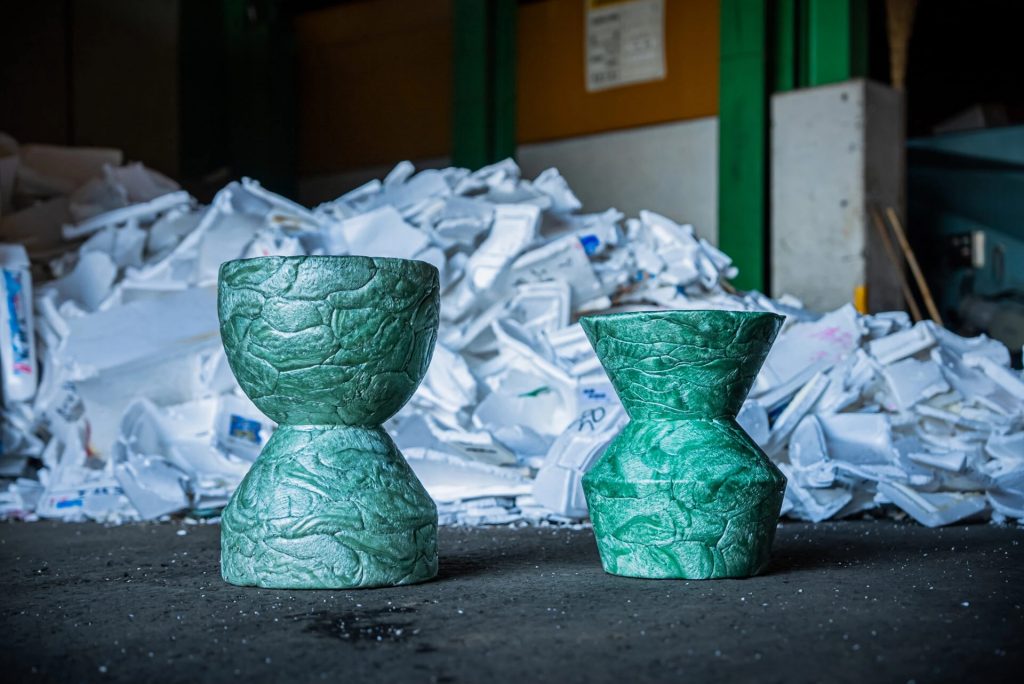
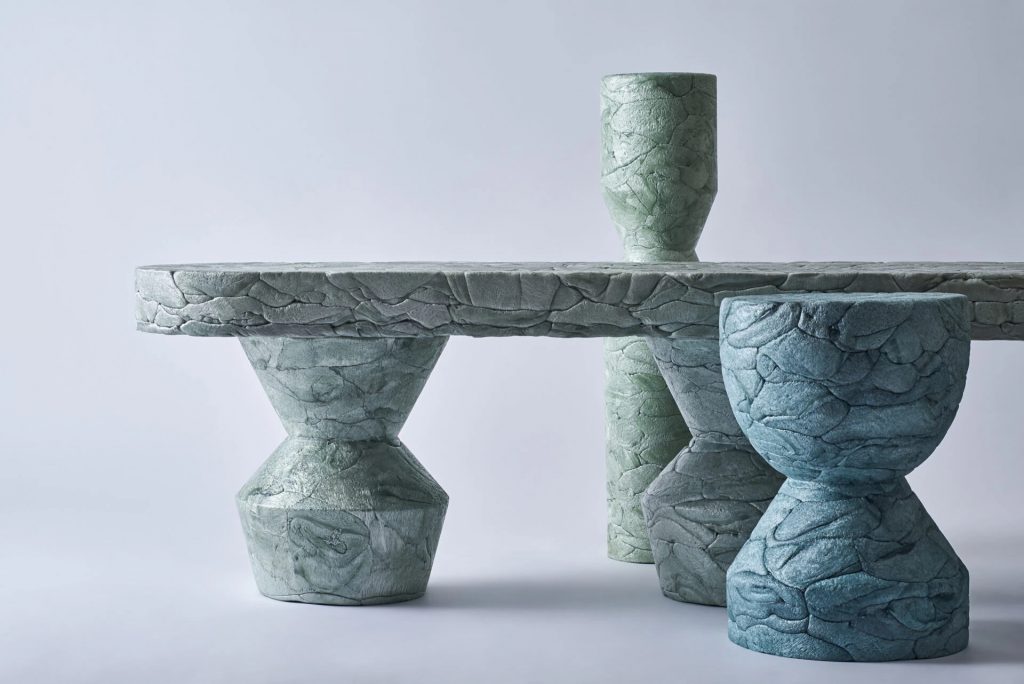
Refoam by we+ (also header image)
Tokyo-based design studio we+ revisits its Urban Origin project with Refoam, a collection of monolithic furniture made from recycled styrofoam. Developed on-site at an intermediate treatment facility in Tokyo, the project repositions styrofoam not as waste, but as a usable, contextually relevant design material. The resulting benches, stools, and tables reflect the studio’s effort to simplify material flows and question the complexity of conventional production systems.
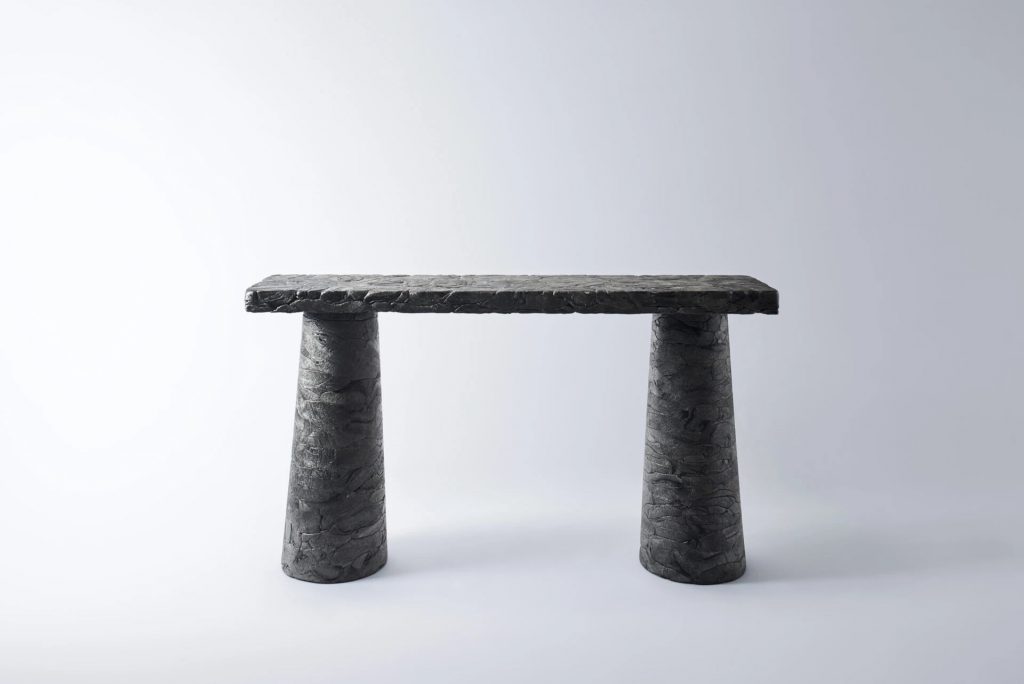
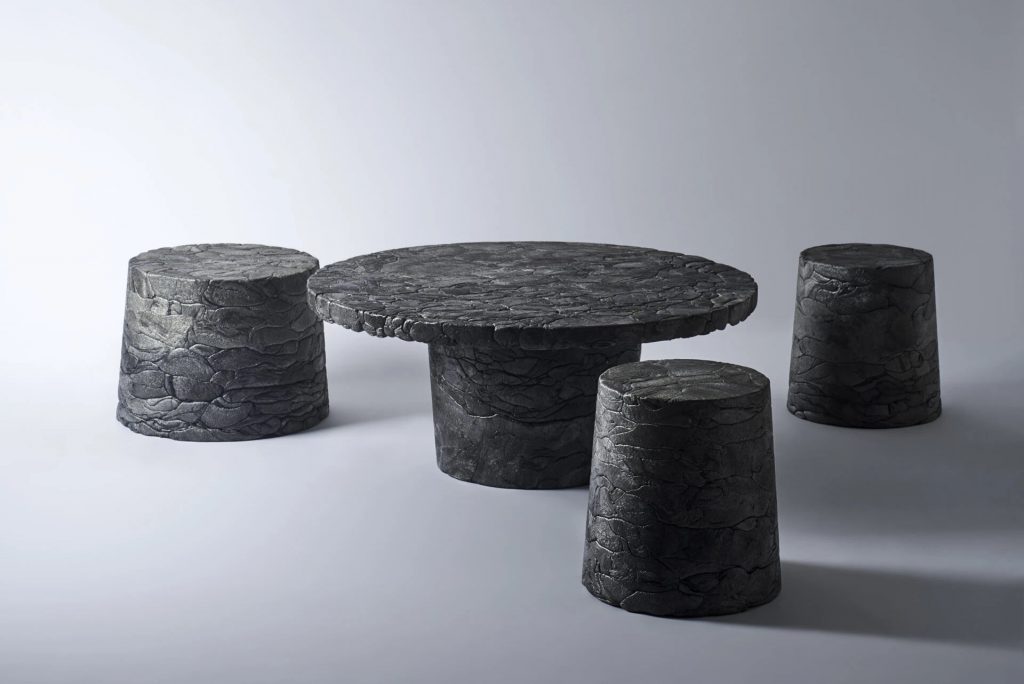
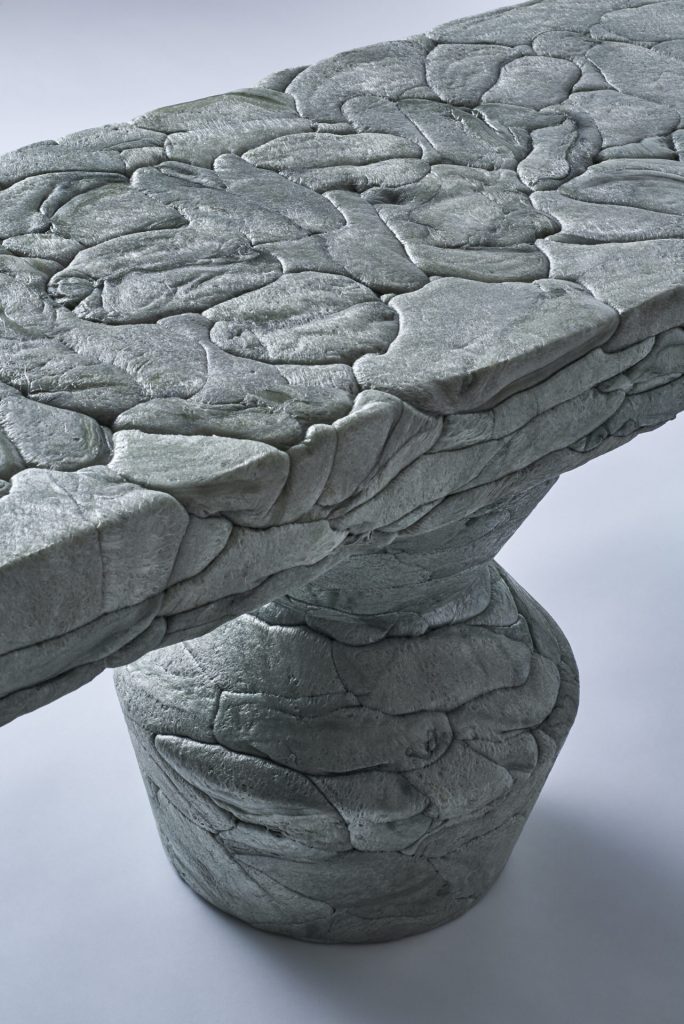
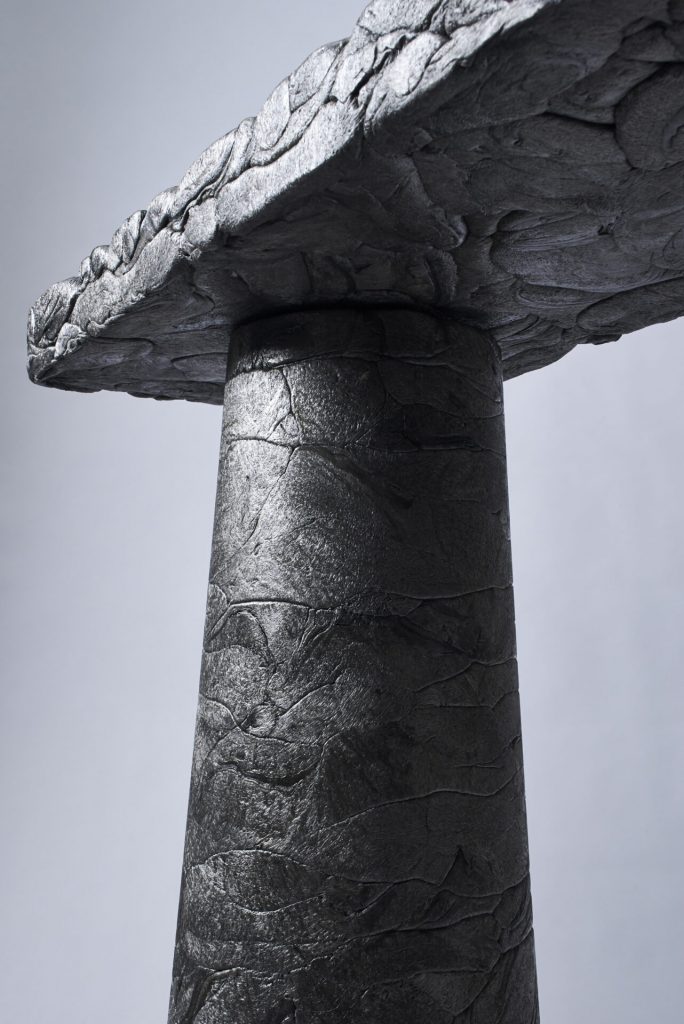
Refoam by we+
Standard recycling processes for styrofoam involve melting it into ingots, exporting it overseas, and reprocessing it into low-cost products—an energy-intensive cycle with significant environmental costs. In contrast, Refoam compresses and reshapes the material directly at the collection site, eliminating transportation and additional reprocessing. This hyper-local method reduces emissions and energy use while preserving material integrity.
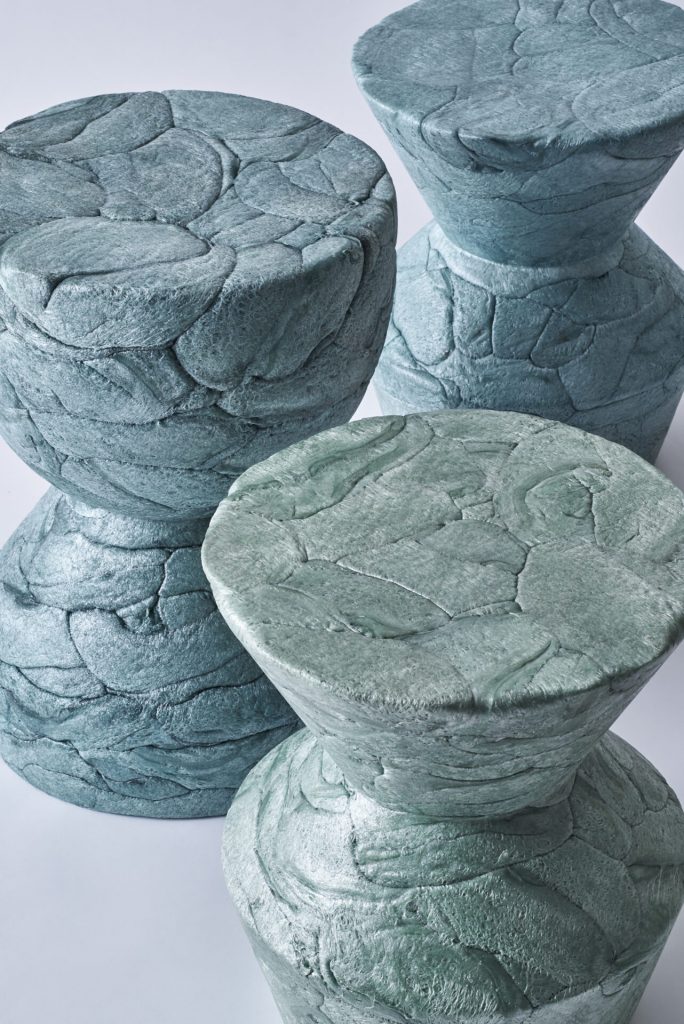
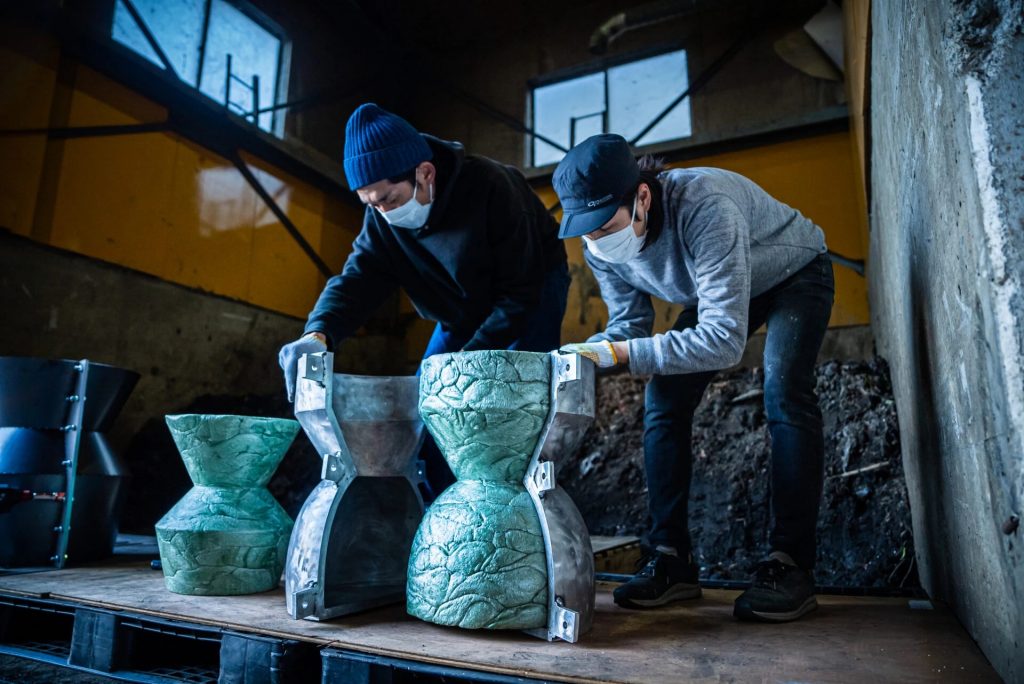
Refoam by we+
By beginning and ending the process within Tokyo’s waste infrastructure, we+ transforms a fragmented global system into a localized model of circular design. Refoam offers a practical framework for rethinking how cities manage waste—not by outsourcing it, but by embedding material reuse into the urban fabric itself.
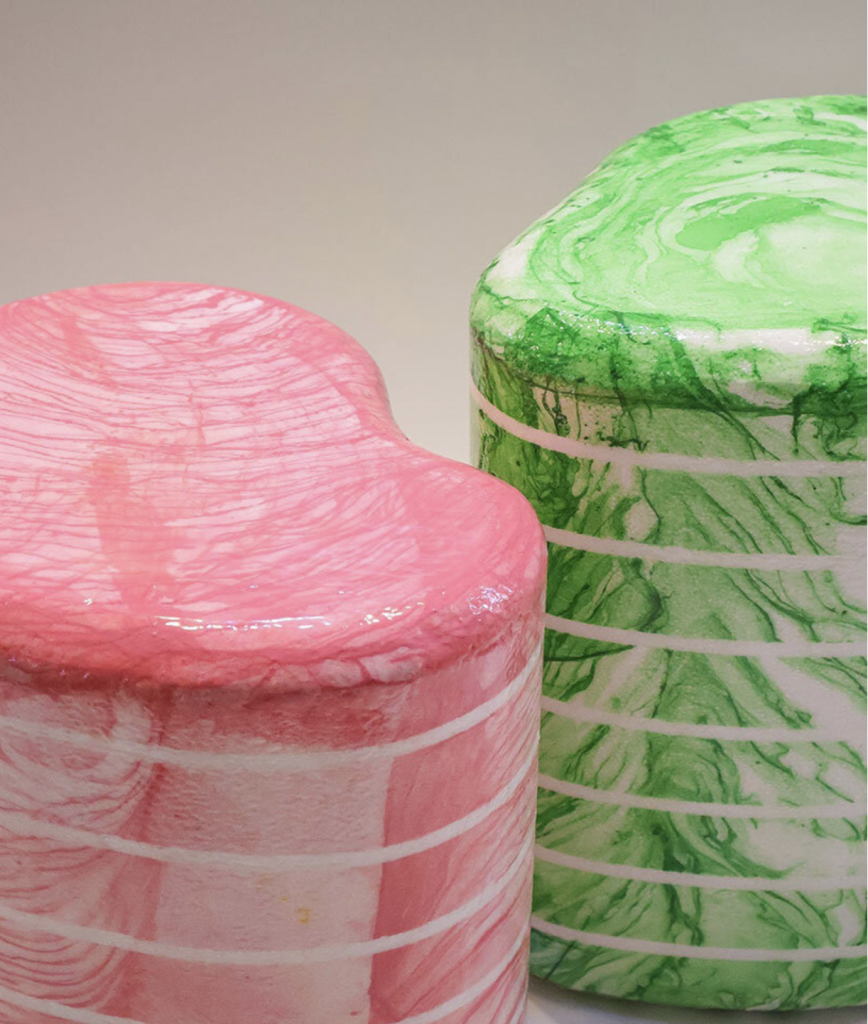
Mosaic by Jiwon Jung
Korean designer Jiwon Jung, working under the brand KINOLD, explores the visual and material potential of styrofoam with the Mosaic series—an evolving collection of seating objects that blend lightweight construction with vibrant, unpredictable surface patterns. Unlike conventional uses of styrofoam as temporary or disposable, these pieces are made durable through an epoxy coating and finished with a lacquer technique that both protects and transforms the material.
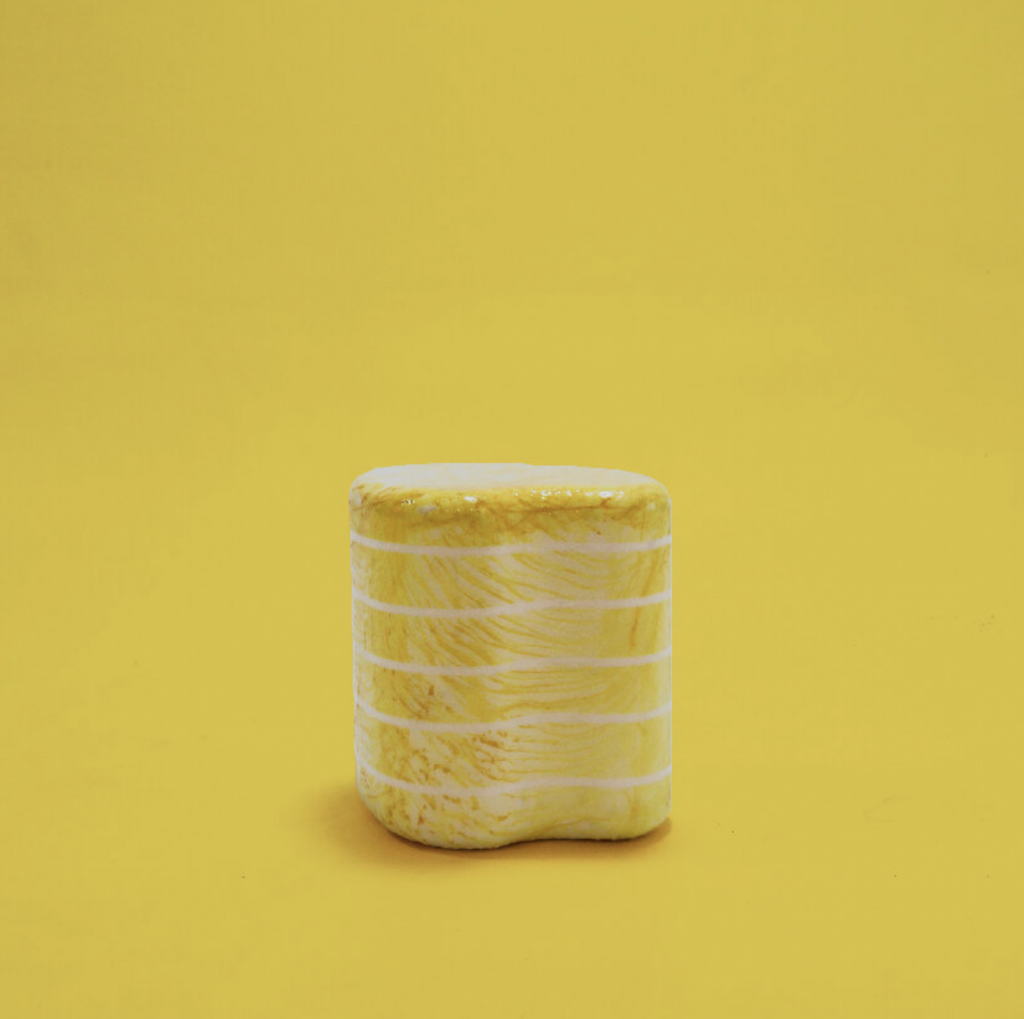
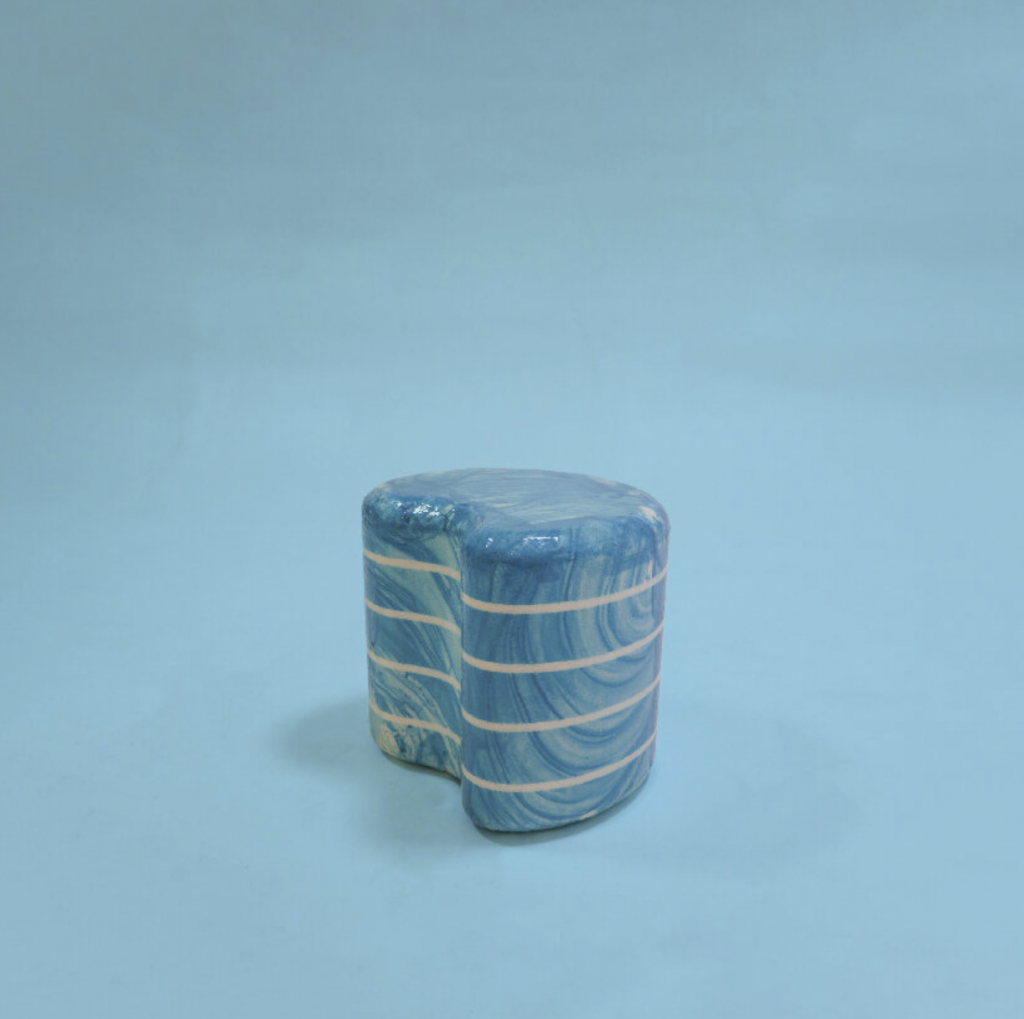
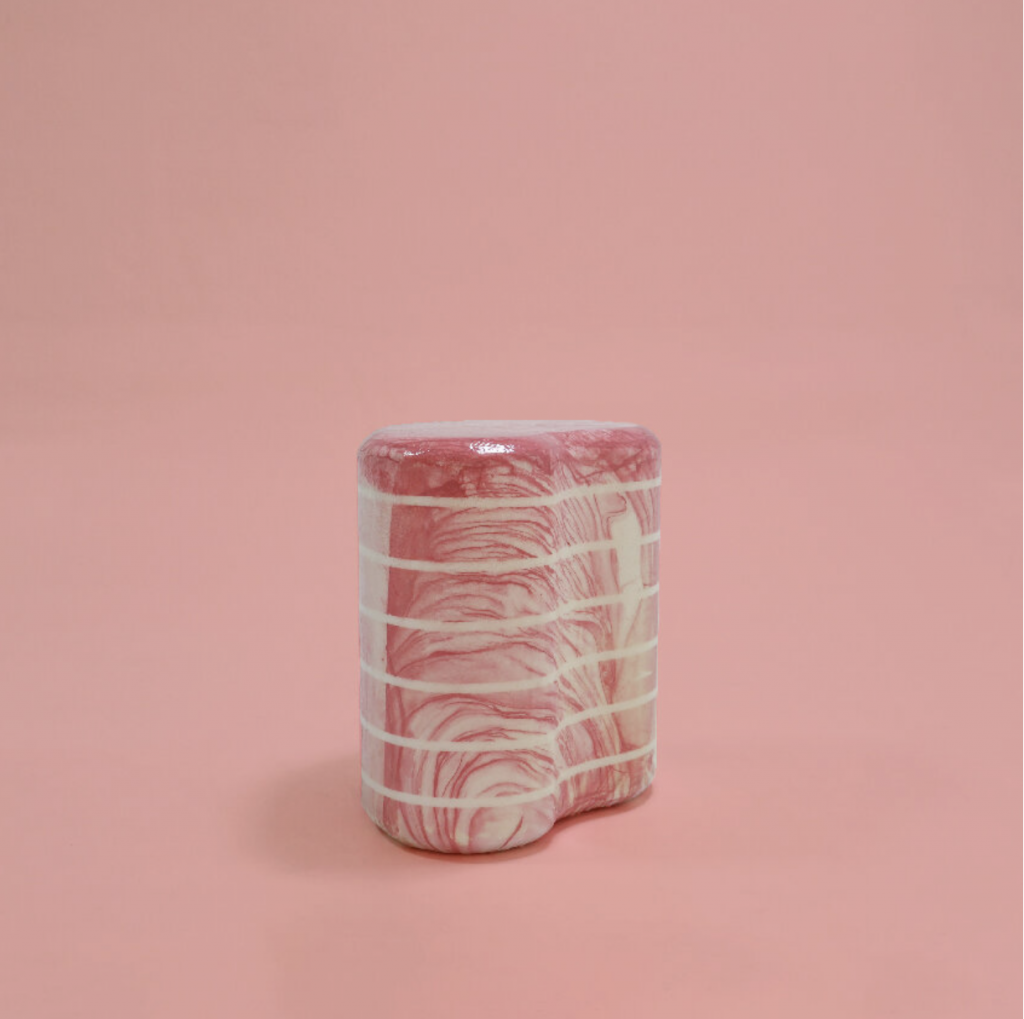
Mosaic by Jiwon Jung
Central to Mosaic’s aesthetic is the use of water transfer printing—a method that creates swirling, organic patterns as color-laden lacquer melts into the styrofoam substrate. The interaction between chemical and material is deliberately uncontrolled, producing one-of-a-kind results that even the designer cannot replicate. The streaks and cavities of the underlying foam remain partially visible, emphasizing its texture rather than concealing it. This unpredictability becomes a key visual language, turning material imperfection into ornament.
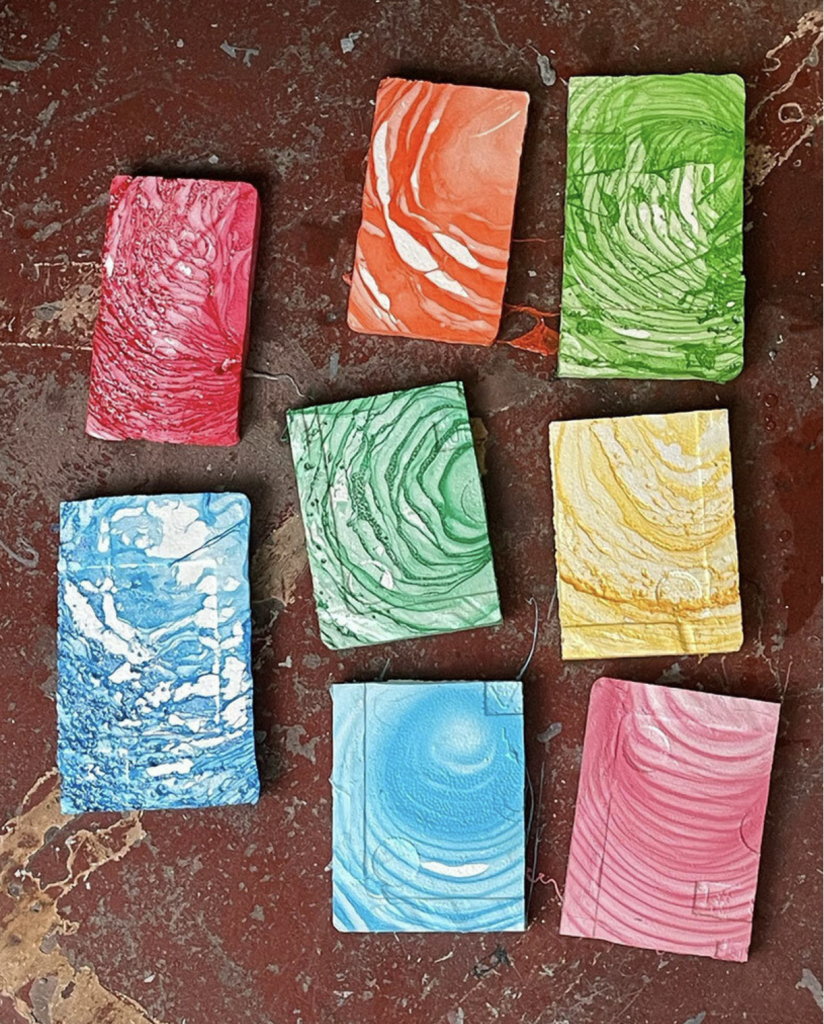
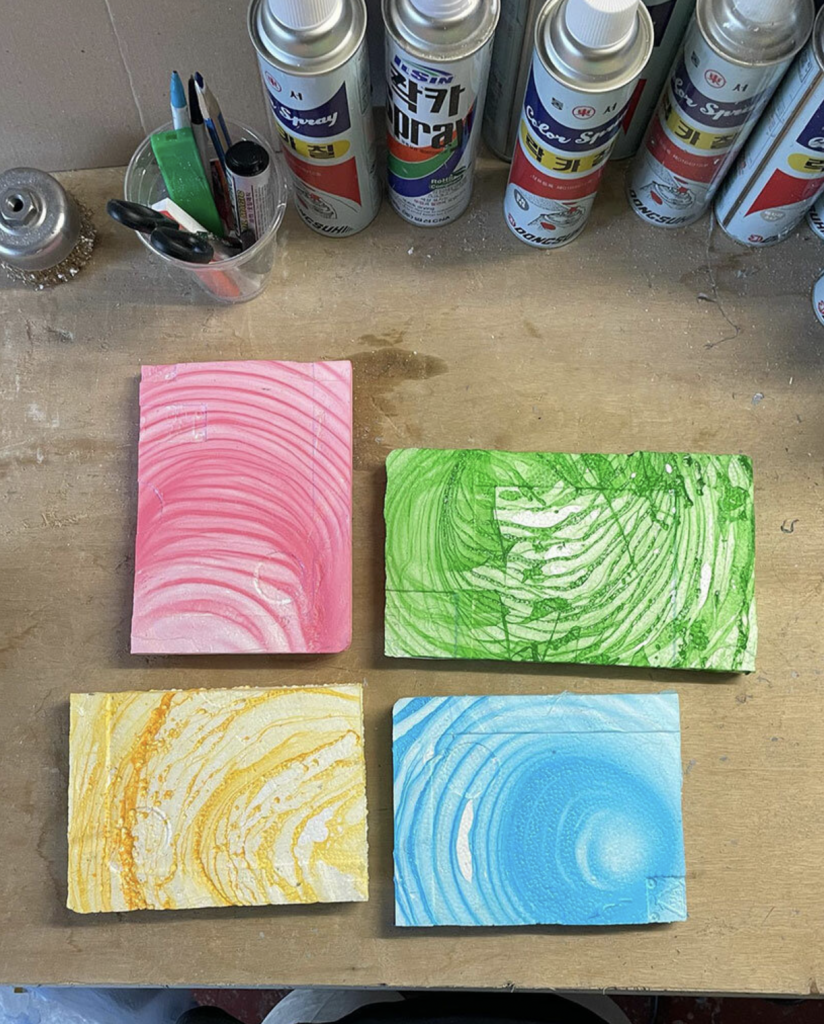
Mosaic by Jiwon Jung
Each chair in the series takes on a distinct form and color palette—Green, Pink, Yellow, and Blue—accommodating varied seating needs while retaining a cohesive identity through their rounded edges and layered hues. Compared to earlier KINOLD works, the Mosaic collection softens its geometry and enriches its surface detail, marking a shift from rigid minimalism to expressive, tactile experimentation. Jung’s work presents a nuanced view of styrofoam: not merely recycled, but reimagined as a site of design spontaneity and visual intrigue.
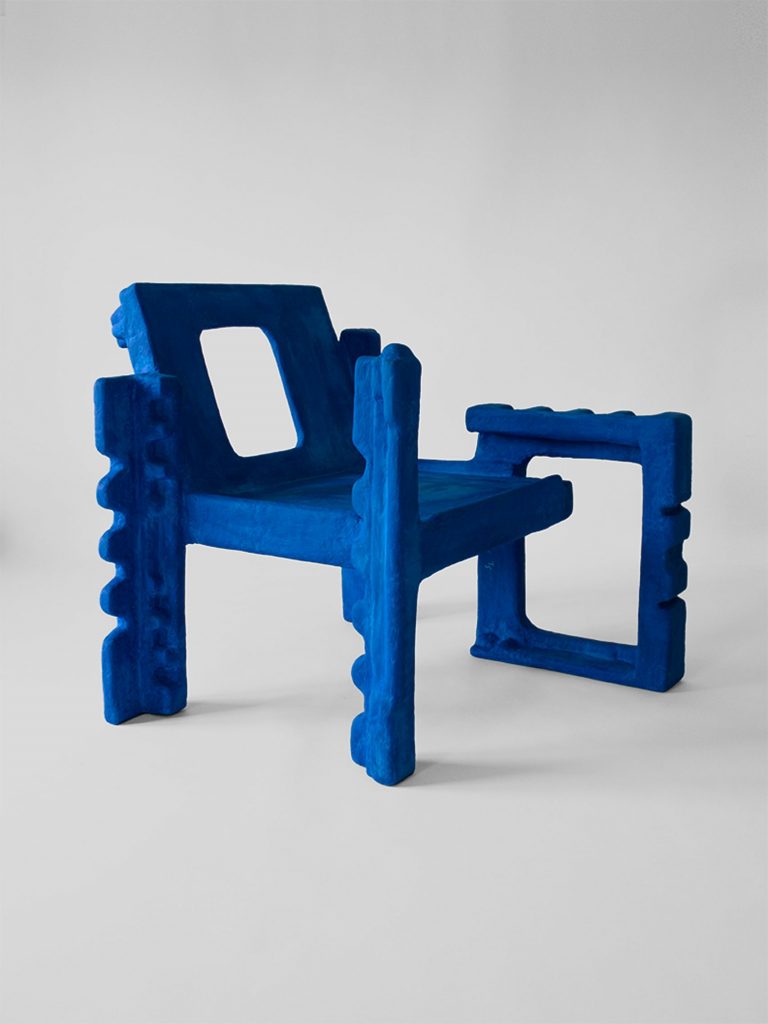
Trashformers by Savvas Laz
In Athens, where recycling infrastructure remains limited, designer Savvas Laz responds with Trashformers—a sculptural furniture project made entirely from salvaged styrofoam packaging. Motivated by the volume of discarded protective materials found in skips across the city, Laz repurposes these otherwise overlooked fragments into functional objects. The project highlights the environmental cost of single-use packaging while suggesting new forms of creative reuse.
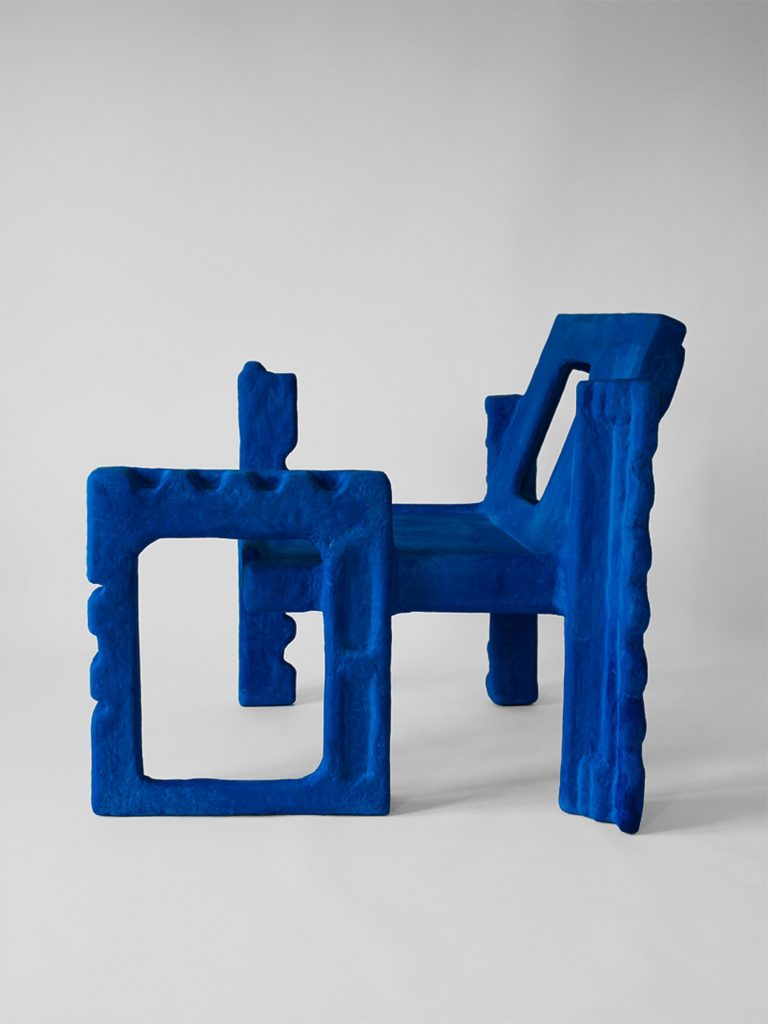
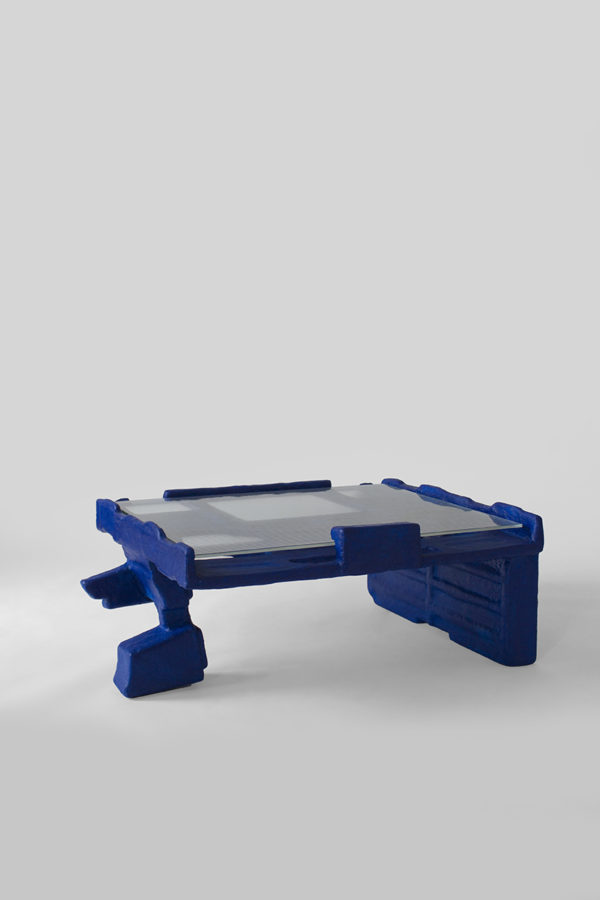
Trashformers by Savvas Laz
Laz collects molded polystyrene blocks—typically used to cushion electronics and appliances—and assembles them without cutting or altering their shape. Treated like modular components, the pieces are stacked and bonded using polyurethane foam, then coated with a resin mixture containing pigment, powder, and fiberglass to add structural strength. The result is a durable chair whose form directly reflects the character of the found materials, offering both visual complexity and critical commentary.
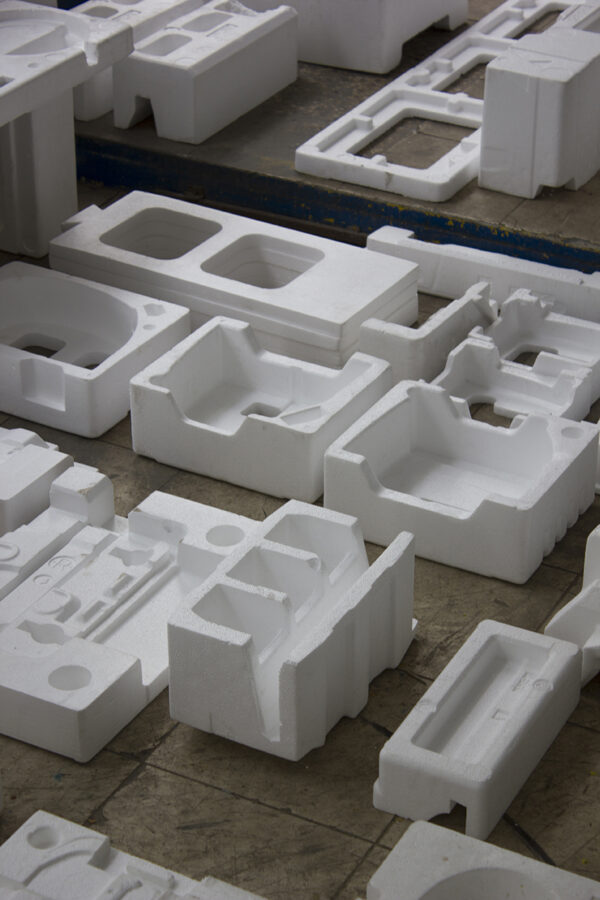
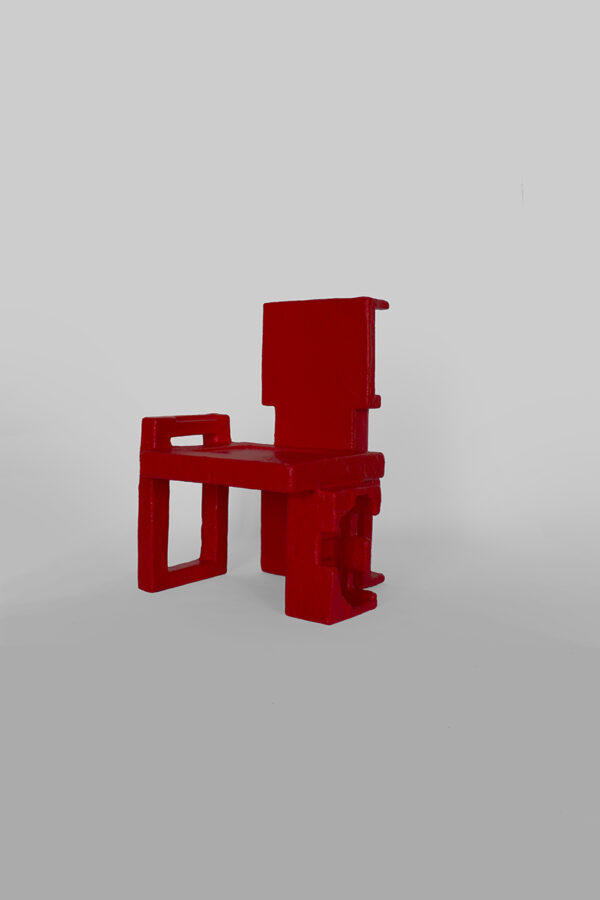
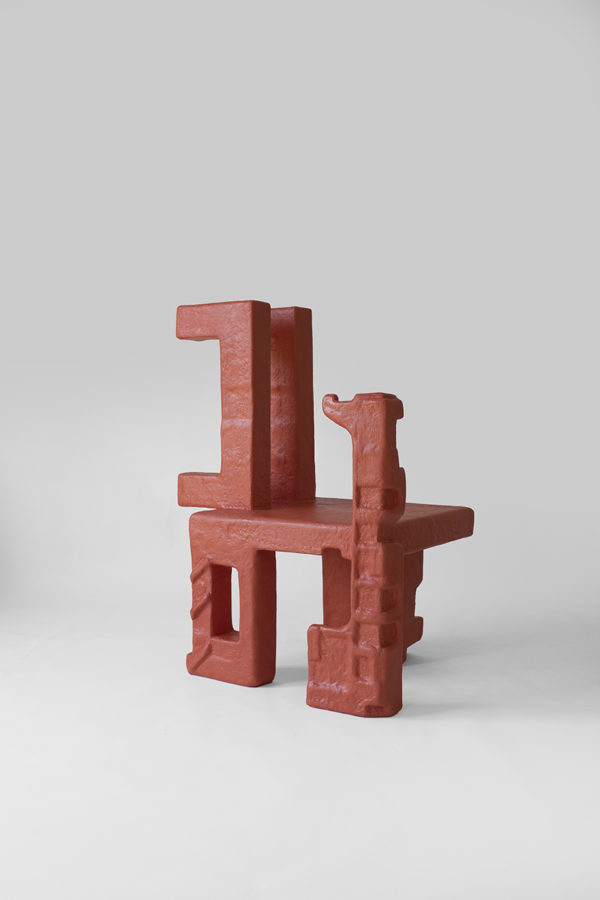
Trashformers by Savvas Laz
Rather than proposing a technical solution to waste, Trashformers seeks to provoke reflection. Laz challenges the design industry’s emphasis on novelty by focusing on surplus: what remains after consumption, what ends up in the margins. By turning packaging waste into a sculptural, usable object, he underscores the overlooked potential in materials considered worthless after their first use.